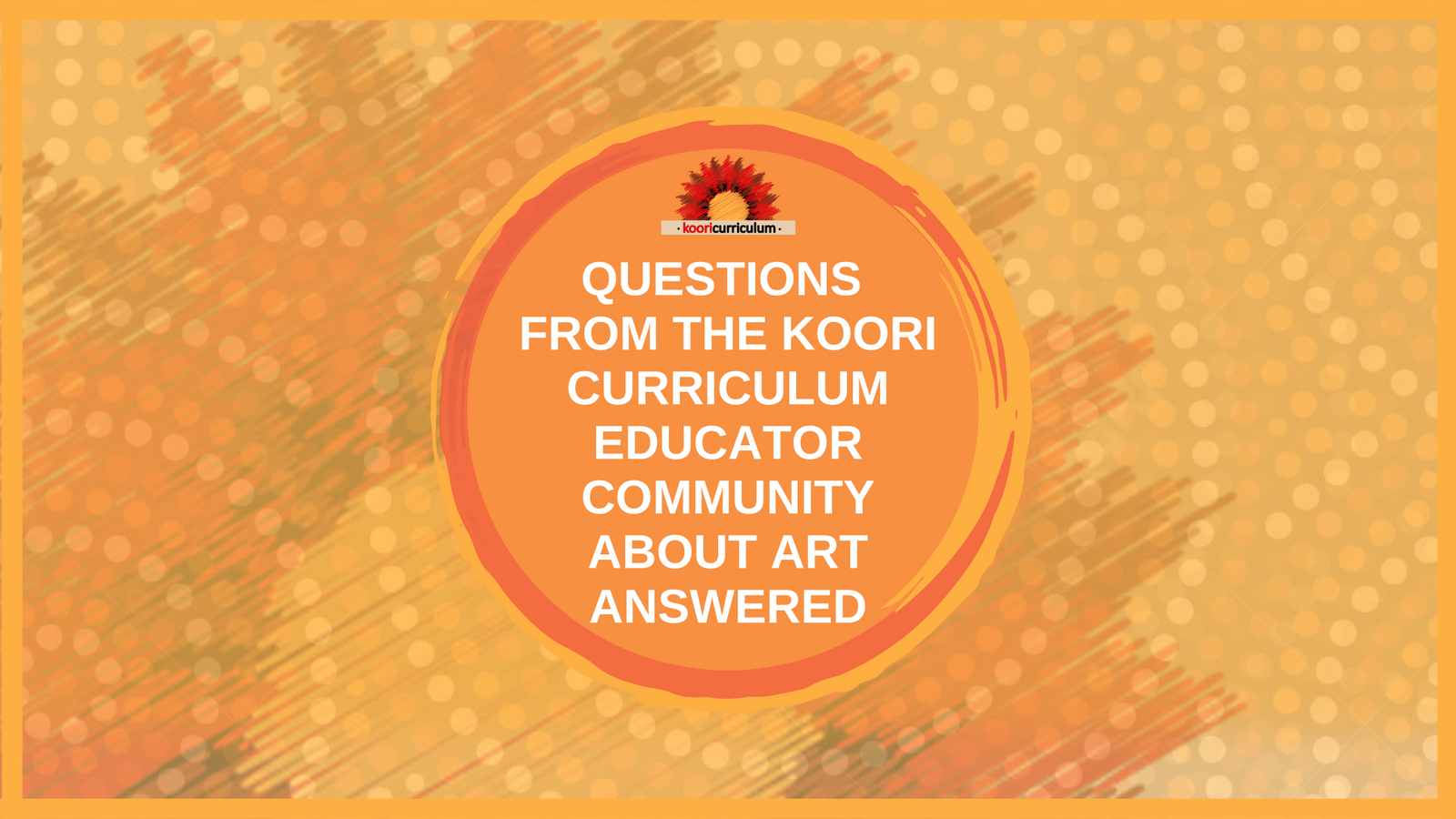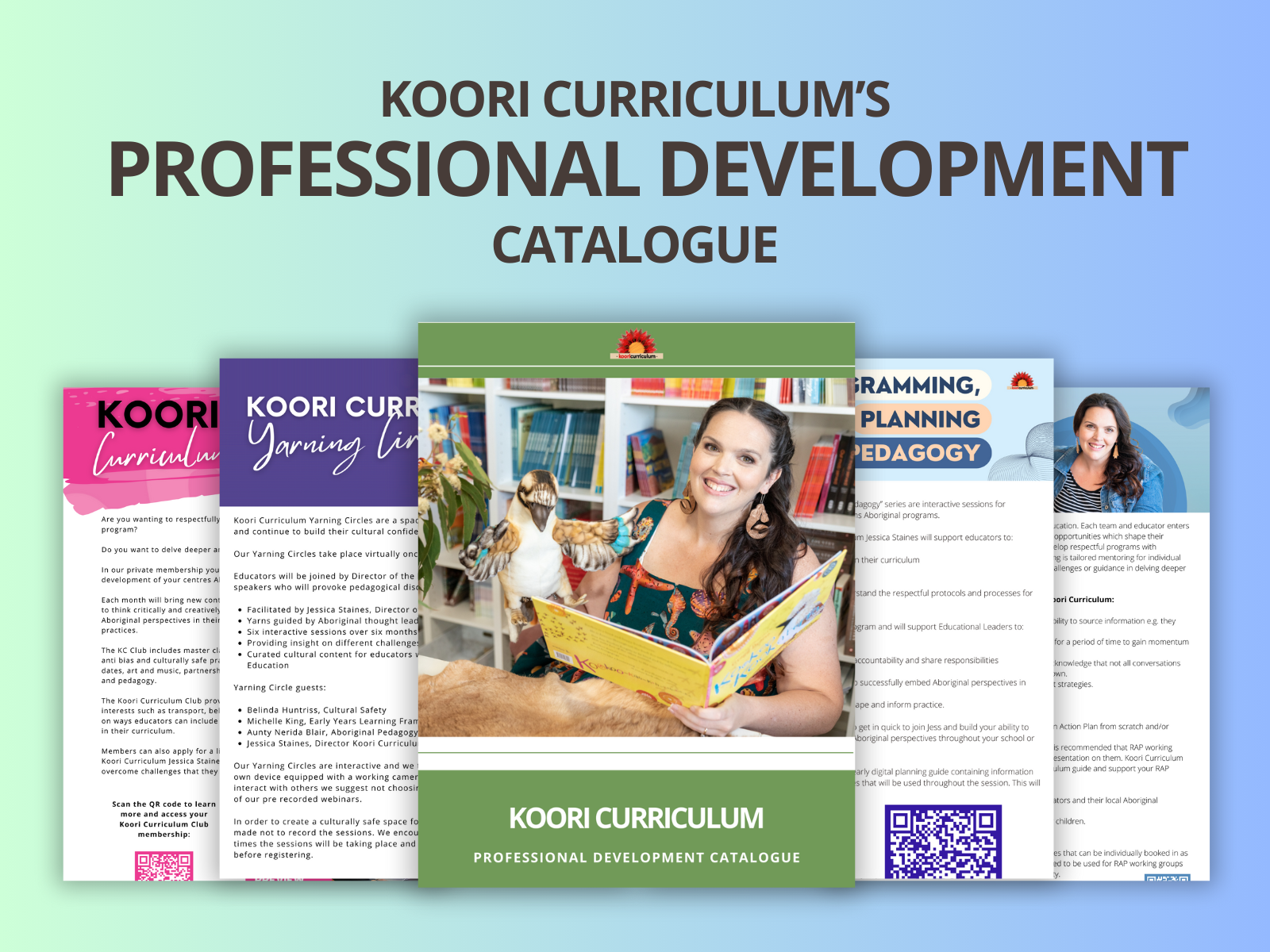
Questions from the Koori Curriculum Educator Community About Art Answered

1) Is it appropriate to display Aboriginal art that inspires children to draw their own interpretations?
To respectfully display Aboriginal art educators must:
- Have bought the artwork they are using and have show reciprocity
- Make the Aboriginal artist visible by at least showing their name, title of work, information about the story and a picture where possible.
Its fine for children to take inspiration from artworks when they are creating but its not ok for them to copy or recreate.
2) When exploring art styles and artists what is the most respectful way to ensure we are providing children with Aboriginal styles and artists. So the children can explore the different techniques and styles themselves, like you would if you are exploring Picasso or still life or abstract etc
For me it's important to expose children to a range of Aboriginal art styles. Aiming for a balance of contemporary, traditional, urban, regional and local art genres. Sourcing a variety of Aboriginal art postcards or poster prints its one way you could affordably make a range of art works by Indigenous creators accessible to children.
Additionally, I try not to teach about Aboriginal art as if it in itself is a topic or interest. Instead I either focus on exploring art elements or childrens interests and find pieces by Aboriginal artists and non Indigenous artists that will add value to their learning and understanding.
3) How to embed Aboriginal perspectives through art without being tokenistic or meaningless.
Tokenism is contingent on what is happening intrinsically within an educator and has everything to do with intention. Continuously revisiting and reflecting on your ‘why’ is important.
Additionally, I recommend that educators take time to research the artist, artwork and art movement before they share with children. Educators who have a greater understanding themselves are able to share more depth and meaning with children.
4) How to identify the different regions that art works come from and how to find out what is local to you.
To learn about what is local to you I would be researching local Aboriginal artists and galleries within your area. I would also suggest connecting with your local Aboriginal Lands Council who may be able to provide information and specific guidance to your local context.
When sharing Aboriginal art from other regions its always a good idea to use the AIATSIS Aboriginal Lands Map as a reference. You can the locate the artists Nation on the map and potentially do further research about that community.
5) Is it appropriate for students to make their own artworks inspired by an Aboriginal style or artwork, referencing the artist and their Country
Instead of focussing on Aboriginal art I recommend that you focus on an elements of art such as colour, shape, line or texture or an interest from children such as rain or insects. I would then source a variety of art provocations from both Indigenous and non-Indigenous artists. It would then be ok for children to look at this collection, take inspiration and paint their own “rainy day” art work.
The goal here is not to teach about Aboriginal art as if it is a topic, theme or interest but instead holistically program and plan to embed Aboriginal perspectives within your art program.
6) I’m in the working group to develop a RAP for our centre. Can I ask the children (all non-aboriginal) to draw a picture of what ‘reconciliation’ means to them (explaining it’s the connection/relationship/working together with aboriginal people), for our RAP document front page? We had a smoking ceremony recently and they may reflect on this.
Yes, I think this sounds like a great experience.



